Beyond Baskerville: The Secret True Tales Behind Sherlock Holmes’ Fictional Adventures
Whether you’re a passionate admirer of Sir Arthur Conan Doyle or a fan of BBC’s hit series Sherlock, it’s difficult not to let your mind wander down creepy corridors to dark places. And knowing about Sir Arthur Conan Doyle’s convictions in spiritualism and belief in many paranormal subjects, I like to think he would have been an avid reader and commenter here at Week In Weird, even if he might not always appreciate the level of humor.
Over the years, I’ve learned one important thing: rarely is anything a purely original creative thought. Be it a work of fiction or an urban legend, it is almost always inspired by some true event. This is also true of the famous detective character of Sherlock Holmes. Holmes himself was based on a real man: Dr. Joseph Bell who was Doyle’s instructor at medical school. So shouldn’t some of Doyle’s stories also be inspired by reality? In the case of The Hound of the Baskervilles, that is certainly true. From the devilish, phosphorescent black hounds of the original novel to the plot devices of the recent series, it appears that truth really can be stranger than fiction.
Where is Baskerville?
You’ll be hard-pressed to find Baskerville Hall on any tourist map of England. That’s because the place simply does not exist. Though it was a product of Doyle’s imagination, it was based on a real location. Baskerville was named after Henry Baskerville, the coach driver for journalist Bertram Robinson. The hall was purely fictitious, yet its location was an amalgam of several places, including Grimspound, Fox Tor Mire, and Hound Tor (shown in the above image, where some scenes for Sherlock’s The Hounds of Baskerville were filmed). Interestingly enough, an old Dartmoor legend states that Hound Tor was formed when a pack of hounds were turned into stone. But those hounds don’t move or glow like the story. So from where did Doyle’s fiendish hounds stem? The answer may lie in the far southeast corner of Dartmoor National Park in the tiny town of Buckfastleigh in Devon.
ADVERTISEMENT
Hell Hounds of Buckfastleigh
Stories of large supernatural black dogs are quite common in the British Isles. Often, these dogs are attached to the European myths of the “Wild Hunt” where a supernatural huntsman leads a pack of animals—usually hounds—on a crazed hunt across the sky or countryside. But there are many rogue black hounds, too. In East Anglia, the Black Shuck is a ghostly black dog with glowing red eyes said to wander the countryside as an omen of death. Lincolnshire’s “Hairy Jack” is viewed as a protective ghostly black dog in the town. And then, of course, there’s also the gigantic, vicious-looking Barghest of Yorkshire. The headless yeth hound or spark-shooting wisht hound of Devon are sometimes claimed to be Doyle’s inspiration, yet with so many black dogs in folklore it’s difficult to pinpoint just one for his muse.
Through Bertram Robinson, Doyle likely heard about the legend of squire Richard Cabell. According to local lore, Cabell was a rather evil man living in the 16th Century prone to threats of violence. Legend says that he murdered his wife in a fit of rage and left her body in the moor. Cabell died on July 5, 1677. Some locals whispered that his throat was ripped out by his wife’s faithful black hound, while other accounts claim that he sold his soul to the Devil and upon his death, a pack of phantom hounds raced across the moor to howl at his tomb. Either way, local legend says that on the anniversary of his death, Cabell’s ghost leads a pack of vicious black hounds across the moors. I order to prevent Cabell’s annual, hellish romp, the locals built a large tomb (shown in the above image) to surround his grave and prevent his escape (or to keep the hellish hounds from digging up his corpse). Eerie red lights have been witnessed inside the tomb; locals sometimes dare each other to run around the crypt seven times and reach inside the iron gates to see if Cabell will bite off their fingers.
Mind Control Modernization
In the BBC series Sherlock, writer Mark Gatiss swapped Doyle’s ghostly Hell Hounds for modern conspiracy theories of top secret mind control experimentation and animal experimentation. There have been widely-published studies or genetics research and gene splicing, and the sad story of Bluebell the glowing “like a fairy” pet rabbit is actually a true story of work by Turkish scientists. But the rabbit’s name might be a twisted version of Project BLUEBIRD.
Before it was known as MKULTRA, Project BLUEBIRD (a.k.a. Project ARTICHOKE—not quite the same ring to it as Project H.O.U.N.D. in the new BBC series) was a CIA attempt at drug-induced mind control as a possible technique for use in interrogation. Its full intent could be summed up in a question posed on a January 1952 memorandum: “Can we get control of an individual to the point where he will do our bidding against his will and even against fundamental laws of nature, such as self-preservation?” How well did they succeed? Perhaps too well, depending upon whom you ask.
There is still quite an air of mystery surrounding the death of Maryland’s biological warfare specialist Frank Olson. While working at Fort Detrick’s Special Operations Division, Olson became an unsuspecting lab rat for the MKULTRA program when he was heavily dosed with LSD-laced Cointreau. The drug resulted in severe paranoia and a total nervous breakdown to such an extent that Olson was sent to New York to see a psychiatrist. While there staying at the Hotel Pennsylvania, he threw himself out of his 13th floor hotel window around 2:30 AM on November 28, 1953. (Whether it was indeed suicide or he was killed off by the CIA is still hotly debated.)
If you think that’s pretty far in the past, then you might be surprised to read about the 1998 U.S. Army report on “Bioeffects of Selected Nonlethal Weapons” focused on the use of microwaves to influence people’s brain waves. As if that’s not worrysome enough, House Bill 2977—the Space Preservation Act—which included a ban on “mood management or mind control of such populations” and “expelling chemical or biological agents in the vicinity of a person” did not pass.
Perhaps a fictional experiment set in Liberty, Indiana, is the least of our worries.
MORE GREAT STORIES FROM WEEK IN WEIRD:


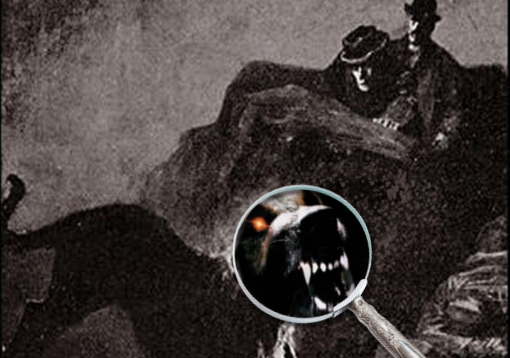


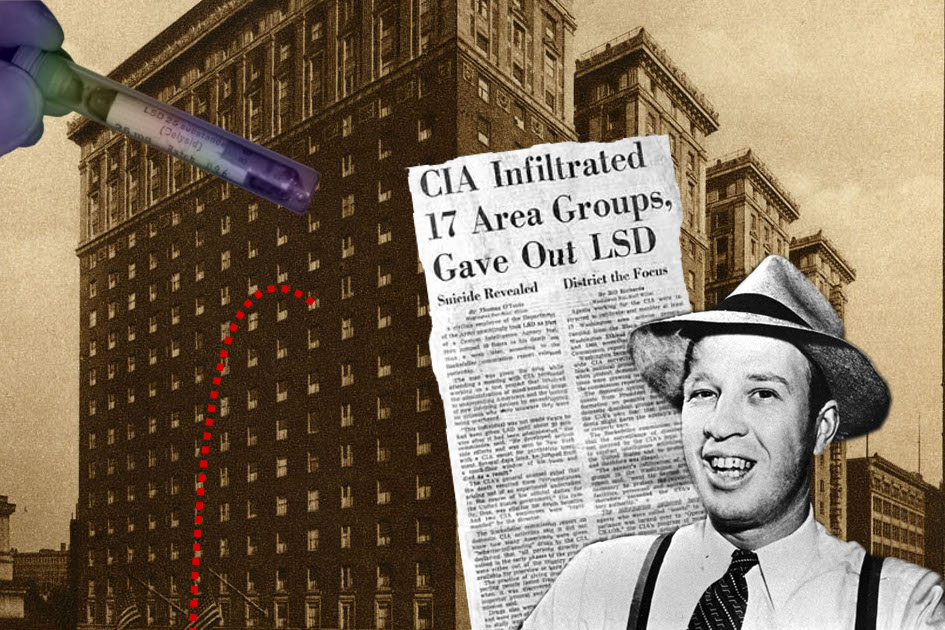
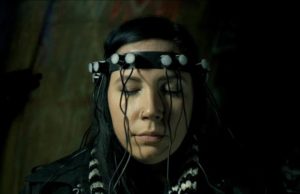
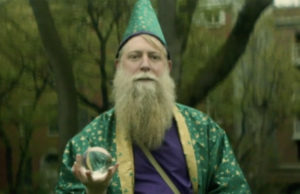
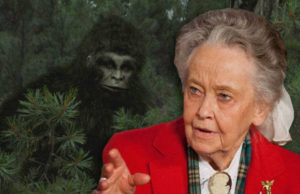
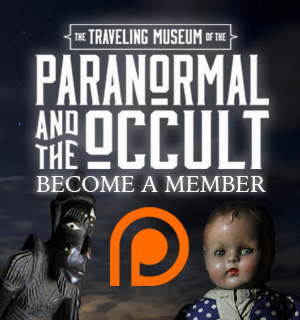
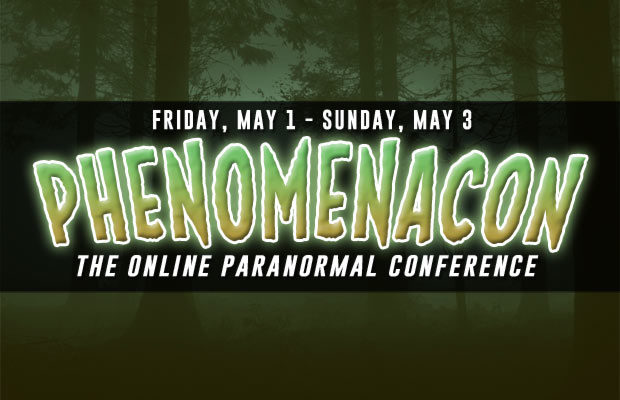
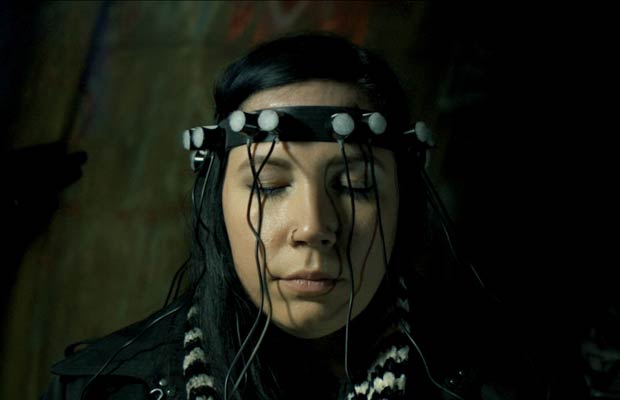
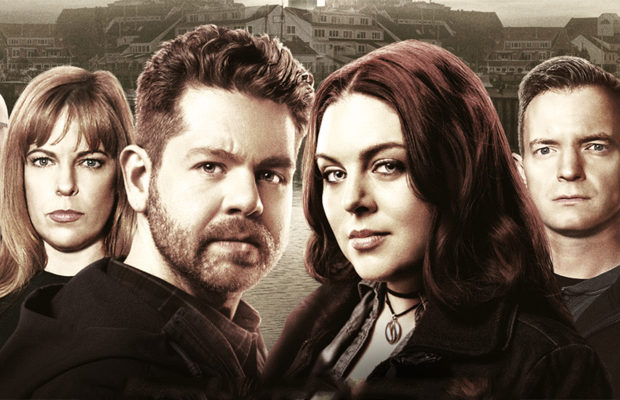
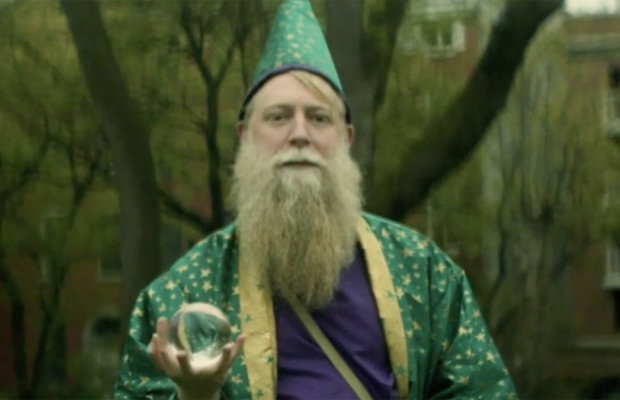

You must be logged in to post a comment Login